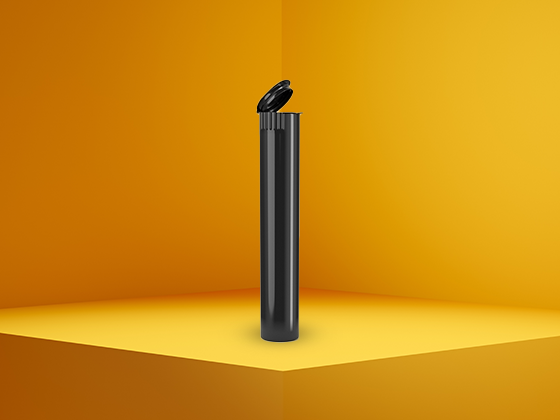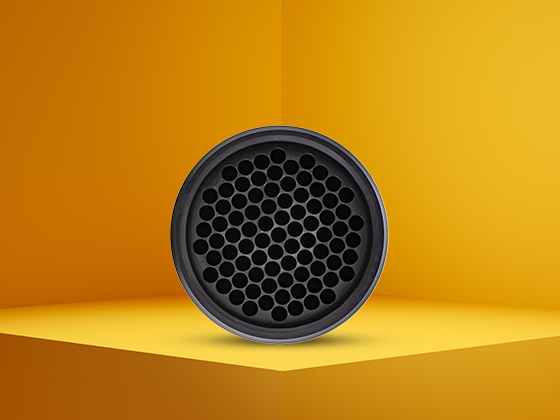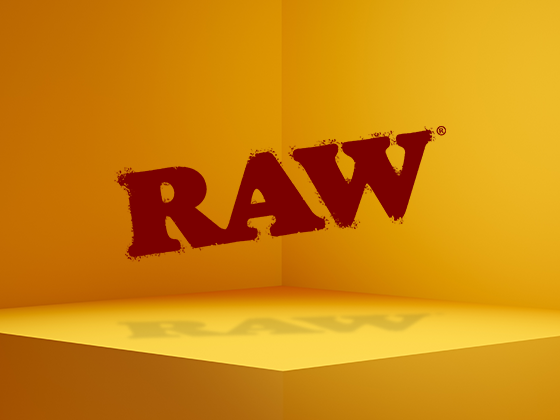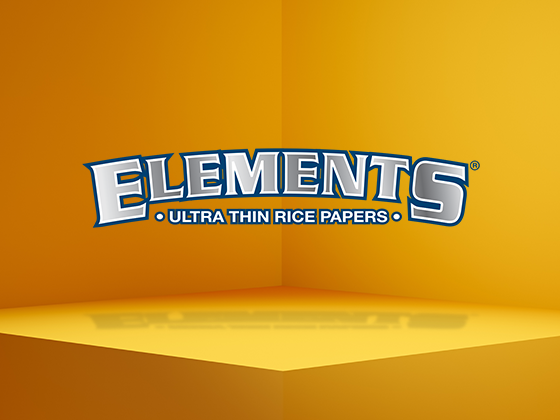Resources

flower
Exploring the Benefits of Glass Tips for Rolling Joints
Table of Contents
What Are Glass Tips for Joints?
Benefits of Using Glass Tips for Rolling Joints
Types of Glass Joint Tips Available
How to Use Glass Tips with Your Joints
Maintenance and Cleaning of Glass Joint Tips
Pairing Glass Tips with Other Rolling Tools
The Evolution of Joint Accessories: Where Glass Tips Fit In
The cannabis consumption experience continues to evolve with innovative accessories designed to enhance enjoyment and functionality. Among these innovations, glass tips for joints have emerged as a premium option for consumers seeking improved flavor, reduced waste, and a more sophisticated smoking experience. This comprehensive guide explores everything you need to know about joint glass tips and why they're becoming increasingly popular among cannabis enthusiasts.What Are Glass Tips for Joints?Glass joint tips are reusable mouthpieces designed to replace traditional paper filters or crutches in hand-rolled joints. Typically crafted from borosilicate or other heat-resistant glass, these accessories create a smooth channel for smoke to travel through while providing structural support to the joint itself. Unlike disposable options, glass filters for joints offer durability and can be used repeatedly with proper maintenance.Benefits of Using Glass Tips for Rolling JointsEnhanced Flavor ProfileOne of the most significant advantages of glass tips is their ability to preserve the natural flavor profile of your cannabis. Unlike paper filters that can impart subtle paper tastes, glass is a neutral material that doesn't affect the terpene profile of your flower. This allows for a purer tasting experience, especially important for connoisseurs and those using premium strains.Improved Airflow and CoolingThe design of most glass joint tips includes internal chambers or spirals that help cool the smoke before it reaches your lips. This cooling effect makes for a smoother inhale and reduces throat irritation. Additionally, these designs often improve airflow, creating an easier draw compared to tightly rolled paper filters.Sustainability FactorIn an industry increasingly focused on sustainable cannabis accessories and preservation solutions, glass tips represent an eco-friendly alternative to single-use options. A well-maintained glass tip can last for years, significantly reducing waste from discarded paper filters.Cleaner Smoking ExperienceGlass tips prevent small particles of plant material from being inhaled, commonly referred to as "Scooby snacks." They also reduce the amount of resin that makes contact with your lips and fingers, keeping your smoking experience cleaner overall.Highlight: Glass tips for joints offer a cleaner, more flavorful smoking experience while reducing waste and providing better filtration than traditional paper alternatives.Types of Glass Joint Tips Available
Standard Glass Tips: Basic cylindrical designs that serve as a simple mouthpiece
Spiral/Helix Tips: Feature internal spiral pathways that cool smoke and trap particles
Artistic Glass Tips: Decorative options featuring colors, patterns, or custom designs
Combo Tips: Multi-functional pieces that can serve as both a tip and a one-hitter
Each style offers different benefits in terms of filtration, cooling, and aesthetic appeal. When selecting joint tips glass options, consider both functionality and personal style preferences.How to Use Glass Tips with Your JointsUsing glass tips requires a slight adjustment to your rolling technique but quickly becomes second nature. Mastering joint rolling techniques with glass tips involves these basic steps:
Place your glass tip at one end of your rolling paper
Distribute ground cannabis evenly along the paper, leaving the tip exposed
Roll as you normally would, ensuring the paper wraps securely around the glass tip
Seal the joint, making sure the connection between the paper and glass is tight
For those new to rolling with glass tips, glass cone tips offer an easier starting point as they provide more stability during the rolling process.Maintenance and Cleaning of Glass Joint TipsTo maintain optimal performance and hygiene, regular cleaning of your glass tips is essential:Cleaning Methods
Isopropyl Alcohol Soak: Submerge the tip in 91% isopropyl alcohol for 30 minutes, then rinse thoroughly
Salt and Alcohol Method: Combine salt with alcohol in a small bag with your tip and shake to remove stubborn residue
Pipe Cleaners: Use to reach internal chambers and remove built-up resin
Regular maintenance ensures your glass tip continues to provide optimal airflow and remains free from harmful bacteria or mold. Most users find cleaning after every 3-5 uses maintains ideal performance.Pairing Glass Tips with Other Rolling ToolsGlass tips work exceptionally well when used alongside other quality rolling accessories. Comprehensive joint rolling guides often recommend pairing glass tips with:
Quality grinders for consistent flower texture
Rolling trays to contain material and support the rolling process
Premium rolling papers that complement the glass tip experience
Specialized rollers for joints and glass tips that simplify the process for beginners
When using rollers for joints and glass tips together, ensure the roller accommodates the diameter of your glass tip. Some manufacturers now produce rolling machines specifically designed to work with standard-sized glass tips.For those looking to elevate their experience further, incorporating concentrates with glass tips creates a premium consumption experience, as the glass helps manage the additional heat and resin produced.The Evolution of Joint Accessories: Where Glass Tips Fit InGlass tips represent part of the broader evolution in cannabis consumption accessories, moving from purely functional items to pieces that enhance both the experience and ritual of smoking. As the market continues to mature, we're seeing innovations in materials, designs, and functionality that cater to increasingly sophisticated consumer preferences.The growing popularity of glass tips aligns with broader industry trends toward premium, reusable accessories that offer both functional benefits and aesthetic appeal. For retailers and brands, offering quality glass tips provides an opportunity to enhance customer experiences while promoting sustainable consumption practices.Whether you're a casual smoker or cannabis connoisseur, exploring glass tips for joints offers a simple way to elevate your smoking experience with benefits that extend from flavor enhancement to environmental consciousness. As joint preservation techniques continue to evolve, glass tips remain at the forefront of accessories that genuinely improve the consumption experience.

flower
Understanding the Slang Term Joint and Its Meaning
Table of Contents
Joint Slang Definition and Origins
The Anatomy of a Joint: Components and Construction
Joints vs. Alternative Consumption Methods
Joint Culture and Social Significance
Regional Joint Terminology and Variations
The term "joint" represents one of the most recognizable pieces of cannabis slang in modern culture. This simple word describes a hand-rolled cigarette containing cannabis, but its cultural significance extends far beyond this basic definition. Understanding what is a joint slang requires exploring its historical context, physical characteristics, and place within broader cannabis terminology.Joint Slang Definition and OriginsIn cannabis culture, a joint refers specifically to ground cannabis flower rolled in thin paper for smoking. The term originated in the early 20th century, derived from the French word "jointure" (meaning to join or connect). By the 1940s, "joint" had become firmly established in American slang lexicons, particularly within jazz communities where cannabis use was common.The slang term gained wider recognition during the counterculture movement of the 1960s and 1970s. Today, it remains the standard terminology across most English-speaking regions, though numerous regional variations exist. As noted in comprehensive guides on joint preparation, the basic concept has remained remarkably consistent despite evolving consumption methods.The Anatomy of a Joint: Components and ConstructionUnderstanding joint slang requires familiarity with the physical construction of this cannabis format. A standard joint consists of:
Rolling paper (typically made from rice, hemp, or flax)
Ground cannabis flower
Optional filter or "crutch" (usually made from thin cardboard)
Optional adhesive (often a gummed edge on the rolling paper)
The construction process involves evenly distributing ground cannabis along the crease of the rolling paper, forming it into a cylindrical shape, and sealing it by licking the adhesive edge. Many consumers add a filter at one end to improve airflow and prevent small particles from being inhaled.For commercial operations producing pre-rolled joints at scale, specialized filling equipment enables consistent production with precise dosing and uniform packing density, eliminating the variability that often comes with hand-rolling.Highlight: The term "joint" specifically refers to cannabis rolled in paper without tobacco, distinguishing it from "spliffs" which contain both substances.Joints vs. Alternative Consumption MethodsThe joint represents just one method within a spectrum of cannabis consumption options. Understanding what makes joints distinct requires comparing them to alternatives:Joint vs. BluntWhile joints use thin paper, blunts utilize cigar wrappings or tobacco leaf papers. This distinction is explored in comparative analyses of these formats, noting that blunts typically contain more cannabis and include the effects of tobacco.Joint vs. SpliffSpliffs combine cannabis with tobacco inside rolling paper. According to resources examining these differences, this mixture creates a different experience due to the combined effects of nicotine and cannabinoids.Joint vs. BowlPipes and bowls represent reusable alternatives to joints. Comparisons between these methods highlight that joints are portable and disposable, while bowls are reusable but less discreet.Joint Culture and Social SignificanceThe joint has unique cultural significance that extends beyond its function as a consumption method. In many communities, joint rolling is considered a skill worth mastering, with techniques passed between generations. The act of sharing a joint in a circle (often called "passing" or "rotation") has become a social ritual with unspoken etiquette.Joints also feature prominently in media representations of cannabis culture, from films to music. This visibility has cemented the joint as perhaps the most immediately recognizable symbol of cannabis consumption, even as newer methods like vaporization gain popularity.The economics of joints also reveals cultural patterns. Analysis of joint pricing and consumption shows regional variations in both cost and typical size, reflecting local cannabis economies and consumption preferences.Regional Joint Terminology and Evolution of Cannabis SlangCannabis terminology varies significantly across regions and generations. While "joint" remains the standard term in American English, international variations include:
"Spliff" (Caribbean and UK, though this sometimes indicates tobacco content)
"Number" or "Jay" (parts of the UK and Australia)
"Porro" (Spain and parts of Latin America)
"Doobie" (popularized in the 1970s, still used in North America)
The language surrounding joints continues to evolve alongside cannabis culture. New terms emerge regularly, particularly in regions experiencing cannabis legalization. Understanding this terminology helps navigate both cultural conversations and product offerings in legal markets.For those interested in preservation techniques, guides on storing pre-rolled joints provide insights into maintaining freshness and potency, addressing common concerns about degradation over time.As cannabis markets mature and consumption methods diversify, the joint remains a foundational format with enduring appeal. Its simplicity, portability, and cultural significance ensure its continued relevance even as new technologies emerge. Understanding joint slang and terminology provides valuable context for both cannabis history and contemporary consumption practices.
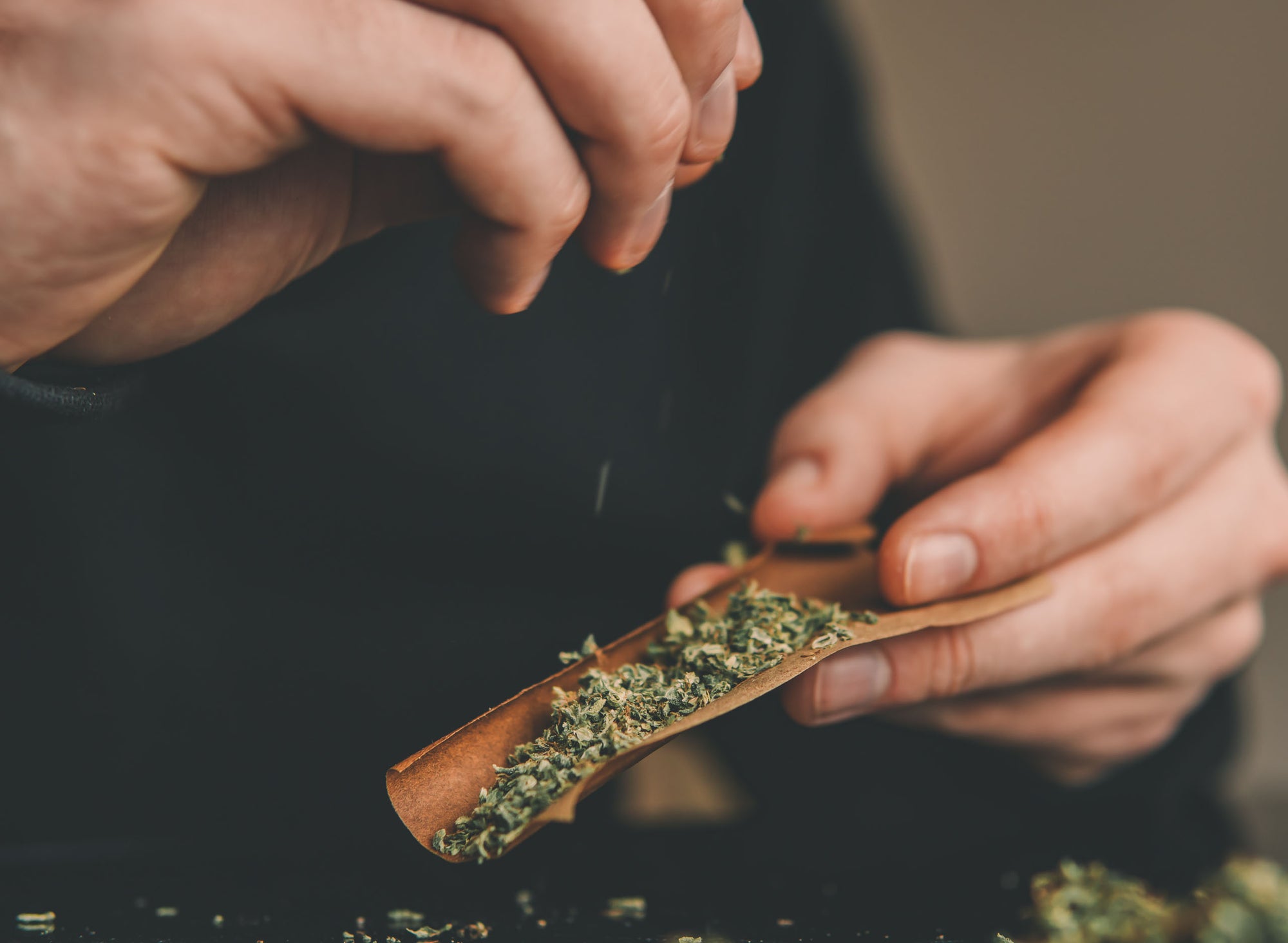
flower
Mastering the Art of Rolling with RAW: Your Guide to Automatic and Manual Techniques
Table of Contents
Understanding RAW Rolling Essentials
Manual Rolling Techniques: Mastering the Classic Method
Automatic Rolling Machines: Efficiency and Consistency
Choosing the Right RAW Products for Your Rolling Style
Troubleshooting Common Rolling Issues
RAW Rolling Future Innovations and Community Trends
nnMastering the Art of Rolling with RAW: Your Guide to Automatic and Manual TechniquesnnPerfecting your rolling technique with RAW products can significantly enhance your smoking experience. Whether you're a novice looking to learn how to roll a RAW joint or a seasoned enthusiast interested in upgrading to an automatic joint rolling machine RAW offers, this comprehensive guide covers everything you need to know about manual and mechanical rolling methods.nnUnderstanding RAW Rolling EssentialsnnRAW has established itself as an industry leader in rolling papers and accessories, known for their unbleached, natural products that provide a pure experience. Before diving into specific techniques, it's important to familiarize yourself with the essential components of a complete RAW rolling kit:nnnRAW rolling papers (available in various sizes)nFilter tips (pre-rolled or standard)nGrinder for consistent material preparationnRolling tray to contain your materialsnOptional automatic roller for consistent resultsnnnQuality materials ensure a smoother rolling process and better final product. RAW's commitment to natural, unrefined products has made them a preferred choice for enthusiasts worldwide.nnManual Rolling Techniques: Mastering the Classic MethodnnStep-by-Step Guide to Hand RollingnnLearning how to roll a joint with RAW papers manually requires practice but offers complete control over your creation:nnnPrepare your filter tip by folding it in an accordion pattern, then roll it to create a cylindernEvenly distribute your ground material along the crease of your RAW papernPlace the filter at one endnUse your thumbs and index fingers to roll the paper back and forth, shaping your materialnTuck the unglued edge of the paper around your material and filternLick the gummed edge and roll upward to sealnTwist the open end to secure your materialnnnManual rolling allows for customization in size, density, and shape that automatic methods sometimes cannot achieve.nnHighlight: Proper material distribution is crucial for an even burn. Ensure your ground material is consistent in texture and evenly placed along the paper before rolling.nnAutomatic Rolling Machines: Efficiency and ConsistencynnFor those seeking consistency or struggling with manual techniques, a joint rolling machine RAW produces can be an excellent solution.nnTypes of RAW Rolling MachinesnnRAW offers several types of rolling machines to suit different preferences:nnnStandard roller (70mm and 79mm) for regular jointsnKing size roller (110mm) for larger formatsn
RAW blunt rolling machine for thicker rollsnAutomatic box rollers with built-in storagennnUsing an Automatic RAW RollernnThe process of using a RAW rolling machine is straightforward:nnnOpen the roller by separating the two rollersnInsert a RAW paper between the rollers with the gummed edge facing up and away from younPlace your filter at one endnAdd your ground material evenly across the papernClose the roller and rotate both rollers forward to form your jointnInsert the gummed edge and continue rolling to sealnnnAutomatic rollers provide consistency that's particularly valuable for medical users who need precise, repeatable results. According to safety guidelines for medicinal products, consistent dosing and proper packaging are important considerations, especially for products that require child-resistant features.nnChoosing the Right RAW Products for Your Rolling StylennRAW offers an extensive range of products to enhance your rolling experience:nnPapers and ConesnnChoose from various options including:nnnRAW Classic (natural brown)nRAW Black (ultra-thin premium)nRAW Organic Hempn
Pre-rolled RAW cones for those who prefer to skip rolling entirelynnnAccessories That Enhance Your Rolling ExperiencennComplete your kit with:nnnRAW rolling trays in various sizesnRAW grinders for consistent material preparationnStorage containers to maintain freshnessn
RAW filter tips (standard or pre-rolled)nnnTroubleshooting Common Rolling IssuesnnEven with the right tools, challenges can arise. Here are solutions to common problems:nnManual Rolling Challengesnnn
Uneven burning: Ensure even material distribution and proper rolling tensionn
Paper tearing: Handle papers with dry fingers and avoid excessive moisturen
Loose rolls: Practice the tucking technique and maintain even pressurennnAutomatic Roller Issuesnnn
Paper jamming: Insert the paper correctly and avoid overfillingn
Inconsistent results: Distribute material evenly and rotate rollers at a steady pacen
Filter slipping: Secure the filter properly before beginning the rolling processnnnRAW Rolling Future Innovations and Community TrendsnnThe art of rolling continues to evolve with new products and techniques emerging regularly. RAW's commitment to innovation means we can expect continued improvements in both manual and automatic rolling solutions. The community around RAW products continues to grow, with enthusiasts sharing techniques and tips online.nnWhether you prefer the traditional approach of hand-rolling or the consistency of an automatic joint rolling machine RAW provides, mastering these techniques allows you to create the perfect roll for your preferences. With practice and the right tools, anyone can achieve professional-quality results that enhance the overall experience.nnRemember that the journey to mastering rolling techniques is personal, and what works best will depend on your specific preferences and needs. Experiment with different papers, machines, and methods to find your ideal approach to the art of rolling with RAW products.
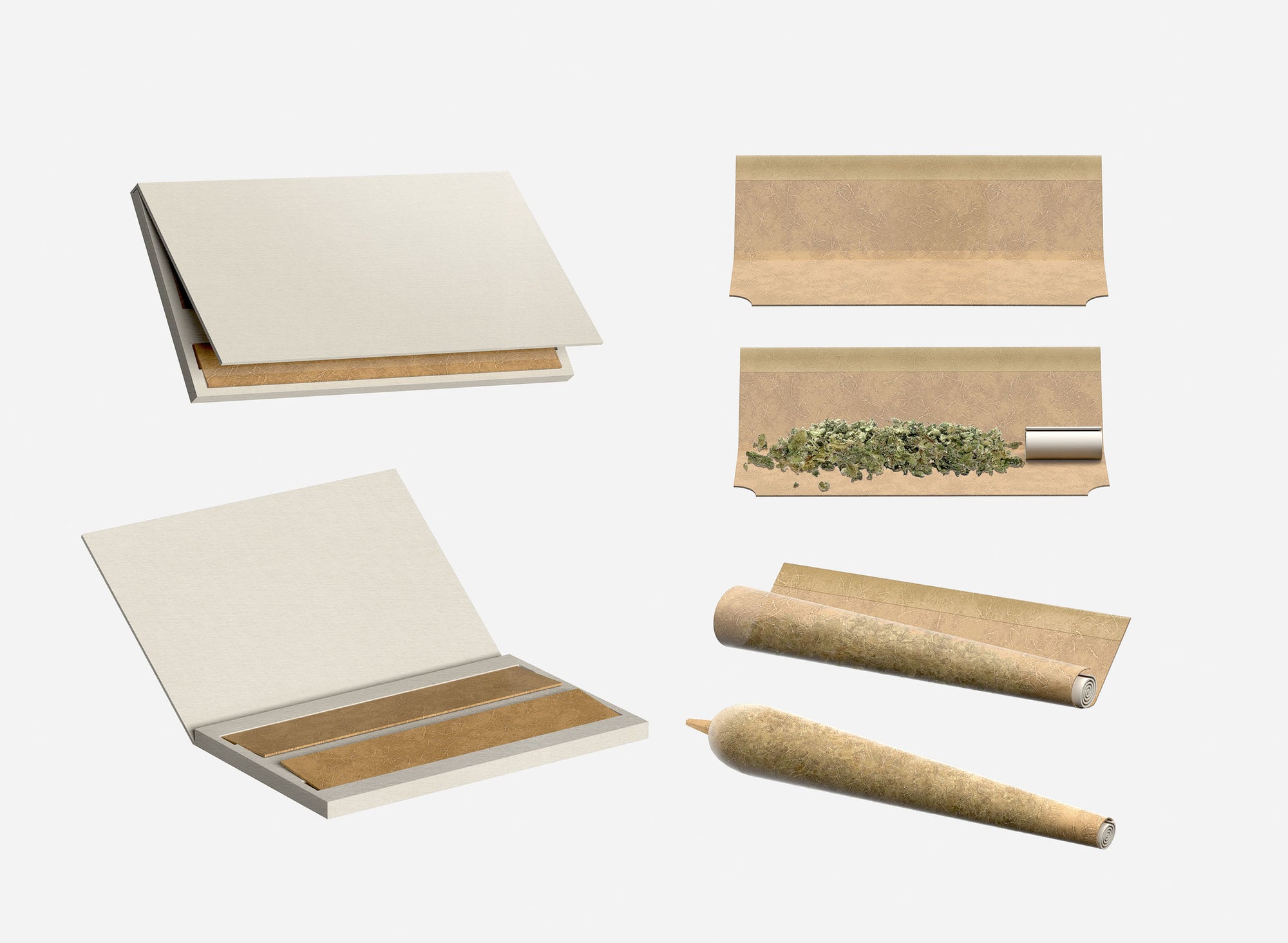
flower
Everything You Need to Know About RAW Rolling Papers
Table of Contents
The History and Philosophy Behind RAW Papers
Types of RAW Rolling Papers
Materials and Composition of RAW Sheets
Spotting Authentic RAW Products
Essential Rolling Techniques for RAW Papers
Accessories and Tools to Enhance Your Rolling Experience
RAW's Sustainability Practices and Environmental Impact
Future Innovations in the RAW Product Ecosystem
nnEverything You Need to Know About RAW Rolling PapersnnRAW rolling papers have revolutionized the rolling experience with their natural approach, distinctive appearance, and commitment to quality. Whether you're new to rolling or a seasoned enthusiast looking to expand your knowledge, understanding the nuances of RAW sheets can significantly enhance your rolling experience. This comprehensive guide covers everything from the brand's origins to rolling techniques and accessories.nnThe History and Philosophy Behind RAW PapersnnFounded by Josh Kesselman, RAW emerged from a vision to create the purest, most natural rolling papers possible. The brand's philosophy centers around unrefined, unbleached papers that maintain the integrity of what's being rolled. Since its inception, RAW has grown from a niche product to a globally recognized brand with a loyal following.nnRAW's commitment to purity isn't just marketing; it's embedded in every aspect of their production process. Their dedication to creating papers free from chalk, burn additives, and other chemicals has set a new standard in the industry.nnTypes of RAW Rolling PapersnnClassic vs. Organic Hemp vs. Black SeriesnnRAW offers several distinctive lines of rolling papers, each with unique characteristics:nnn
RAW Classic: Made from unrefined, natural brown rice paper, these are the original RAW sheets that started it all.n
RAW Organic Hemp: Created from organically grown hemp plants, offering a slightly thicker texture and slower burn.n
RAW Black: The ultra-thin premium line, designed for connoisseurs who prefer minimal paper interference.nnnAs detailed in this comprehensive guide to RAW paper types, each variety offers different burning characteristics and rolling experiences.nnSize VariationsnnRAW papers come in multiple sizes to accommodate different preferences:nnnSingle Wide (70mm x 37mm)n1 ¼ (79mm x 44mm)n1 ½ (79mm x 60mm)nKing Size (110mm x 53mm)nKing Size Slim (110mm x 45mm)nnnHighlight: RAW sheets are available in various thicknesses and materials, allowing users to customize their rolling experience based on personal preference and occasion.nnMaterials and Composition of RAW SheetsnnRAW papers stand out for their minimalist approach to materials. The papers are crafted from unrefined plant fibers, primarily rice and hemp, depending on the specific line. What's notably absent are the additives commonly found in conventional rolling papers: no chalk, no added burn agents, and no artificial coloring.nnThis natural composition contributes to RAW's signature light tan color and the distinctive watermark pattern visible when held to light. For those concerned about what they're consuming, this detailed breakdown of RAW paper composition provides reassurance about their safety profile.nnSpotting Authentic RAW ProductsnnWith RAW's popularity has come an unfortunate rise in counterfeit products. Authentic RAW papers have several distinguishing features:nnnCriss-cross watermark that becomes visible when held to lightnNaturally uneven edges (not perfectly straight cuts)nMicrotext on packaging that reads "RAW" repeatedlynQR code verification on newer packagingnnnThe packaging itself offers clues to authenticity, with distinctive RAW wrappers and packaging elements that counterfeiters often fail to replicate accurately.nnEssential Rolling Techniques for RAW PapersnnRolling with RAW papers requires slightly different techniques than with conventional papers. Their natural composition means they have less grip than chemically treated papers, which can be challenging for beginners.nnFor optimal results:nnnStart with the gum strip facing up and away from younDistribute material evenly along the creasenUse a gentle touch when tucking the papernLick the gum strip lightly, as over-wetting can compromise the adhesivennnMany enthusiasts find that using quality rolling trays from our collection significantly improves their rolling process by providing a clean, flat surface that prevents material loss and helps with organization.nnAccessories and Tools to Enhance Your Rolling ExperiencennRAW has developed an extensive ecosystem of accessories designed to complement their papers:nnn
RAW Tips/Filters: Available in various sizes and materials, including the premium Glass Tipsn
RAW Rollers: Mechanical devices that simplify the rolling processn
RAW Pre-rolled Cones: Ready-to-fill cones for those who struggle with hand-rollingnnnFor those who prefer the convenience of pre-rolled options, our selection of RAW cones offers the same quality experience without the rolling learning curve.nnRAW's Sustainability Practices and Environmental ImpactnnBeyond creating natural products, RAW has established the RAW Foundation, which supports various environmental and social causes. Their commitment to sustainability extends to their sourcing practices, with hemp and rice papers sourced from regions known for sustainable agriculture.nnThe company has also pioneered biodegradable packaging solutions and continues to reduce plastic in their product line. This environmental consciousness has helped cement RAW's reputation as not just a product but a lifestyle brand with values that resonate with conscious consumers.nnFuture Innovations in the RAW Product EcosystemnnRAW continues to evolve its product offerings based on community feedback and technological advancements. Recent innovations include improved gum strips for better adhesion, specialized papers for specific rolling preferences, and expanded accessory lines that complement the core paper products.nnAs the market for rolling papers grows and diversifies, RAW remains at the forefront by balancing traditional craftsmanship with modern innovations. Their commitment to natural materials while improving functionality ensures that RAW sheets will continue to be a top choice for discerning rollers worldwide.nnWhether you're just starting your rolling journey or looking to refine your technique with premium papers, this guide on purchasing authentic RAW papers can help ensure you're getting the genuine experience that has made RAW a household name in rolling culture.

business tips
Mastering Pre-Rolls: Tips and Techniques for Rolling, Packing, Using, and Fixing
Table of Contents
Understanding Pre-Rolls: The Basics
Rolling Techniques for Perfect Pre-Rolls
Packing Methods for Consistent Pre-Rolls
Using Pre-Rolls: Best Practices
Extinguishing Pre-Rolls Properly
Fixing Broken Pre-Rolls: Salvage Solutions
Storage and Maintenance for Optimal Freshness
Pre-rolls have become one of the most convenient and popular cannabis consumption methods in the market today. Whether you're a newcomer or experienced consumer, understanding how to properly roll, pack, use, and fix pre-rolls can significantly enhance your experience. This comprehensive guide covers everything you need to know about mastering the art of pre-rolls.Understanding Pre-Rolls: The BasicsPre-rolls are ready-to-use cannabis joints that come prepared for immediate consumption. According to this resource on understanding pre-rolls, they typically contain ground cannabis flower wrapped in rolling paper with a filter or crutch at one end.The appeal of pre-rolls lies in their convenience and accessibility. They eliminate the need for grinding, rolling, and packing, making them ideal for both beginners and those who prefer ready-to-use products. Pre-rolls come in various sizes, strains, and potencies to suit different preferences and occasions.Rolling Techniques for Perfect Pre-RollsLearning how to roll a pre-roll is a valuable skill for cannabis enthusiasts. Here's a step-by-step approach:Materials Needed
Rolling papers (hemp, rice, or flax)
Ground cannabis flower
Filter tips or crutches
Grinder
Small card for scooping
Step-by-Step Rolling Process
Grind your cannabis to a medium consistency
Create and place a filter at one end of the paper
Distribute the ground cannabis evenly along the paper
Tuck the unglued side of the paper around the cannabis
Roll upward and lick the glued edge to seal
Twist the open end to secure the contents
The key to a successful roll is maintaining even distribution and appropriate tightness. Too loose, and it burns unevenly; too tight, and airflow is restricted.Packing Methods for Consistent Pre-RollsKnowing how to pack a pre-roll properly ensures an even burn and optimal experience. For those using pre-made cones or tubes, follow these packing techniques:Using Pre-Made Cones
Hold the cone upright with the open end facing up
Use a funnel or card to guide ground cannabis into the cone
Tap gently to settle the material as you fill
Use a packing tool to gently compress without overpacking
Fill to just below the edge and twist to close
For optimal results, our specialized containers with child-resistant lids can help maintain freshness and protect your finished pre-rolls from moisture and damage, especially important when preparing multiple pre-rolls in advance.Highlight: The perfect pre-roll requires balanced packing: firm enough to prevent canoeing (uneven burning), but loose enough to allow proper airflow.Using Pre-Rolls: Best PracticesKnowing how to use a pre-roll properly maximizes enjoyment and minimizes waste. This guide for beginners offers valuable insights on consumption techniques.Lighting Techniques
Hold the pre-roll with the filter end toward you
Rotate the pre-roll while applying the flame
Avoid inhaling while initially lighting
Once evenly lit, take slow, measured draws
Consumption Tips
Start with small puffs, especially with high-potency products
Allow 10-15 minutes between puffs to gauge effects
Rotate the pre-roll occasionally for even burning
Tap ash gently as it accumulates
Extinguishing Pre-Rolls ProperlyLearning how to put out a pre-roll correctly preserves the remaining product for later use and enhances safety. According to this resource on extinguishing methods, several approaches work effectively:Gentle Extinguishing Methods
Gently tap the burning end against an ashtray until extinguished
Use a doob tube or pre-roll container to smother the flame
Wet your finger and carefully dampen the burning tip (avoid soaking)
Commercial pre-roll caps can extinguish and store partially used pre-rolls
Avoid crushing or smashing the pre-roll, as this damages the structure and makes it difficult to relight later.Fixing Broken Pre-Rolls: Salvage SolutionsKnowing how to fix a broken pre-roll can save your investment and prevent waste. Common issues include tears, breaks, and uneven burning.Repair Techniques
For minor tears: Use a small piece of rolling paper as a patch, applying with a tiny amount of adhesive
For broken pre-rolls: Transfer the contents to a new paper and re-roll, or use the "emergency surgery" method below
For canoeing: Moisten your finger and apply to the faster-burning side, then rotate to even the burn
Emergency Surgery Method
Carefully unwrap the broken pre-roll
Salvage the filter if possible
Transfer contents to a new paper
Re-roll following standard techniques
This approach is particularly useful when dealing with premium products where preserving the contents is worth the effort. The cost consideration is significant, as this guide on pre-roll pricing explains.Storage and Maintenance for Optimal FreshnessProper storage extends the life and maintains the quality of your pre-rolls. Temperature, humidity, and container choice all play crucial roles in preservation. For both commercial and personal use, consider these pre-roll tips for storage:
Store in airtight containers away from direct sunlight
Maintain humidity levels between 59-63% using humidity control packs
Keep away from extreme temperatures
Use dedicated storage solutions like doob tubes or pre-roll cases
Consider child-resistant options for safety, especially in homes with children
Whether you're rolling your own or purchasing pre-made products, these techniques for rolling, packing, using, extinguishing, fixing, and storing pre-rolls will help ensure consistent, enjoyable experiences. The key is practice and attention to detail, as even small adjustments can significantly impact the quality of your pre-roll experience.
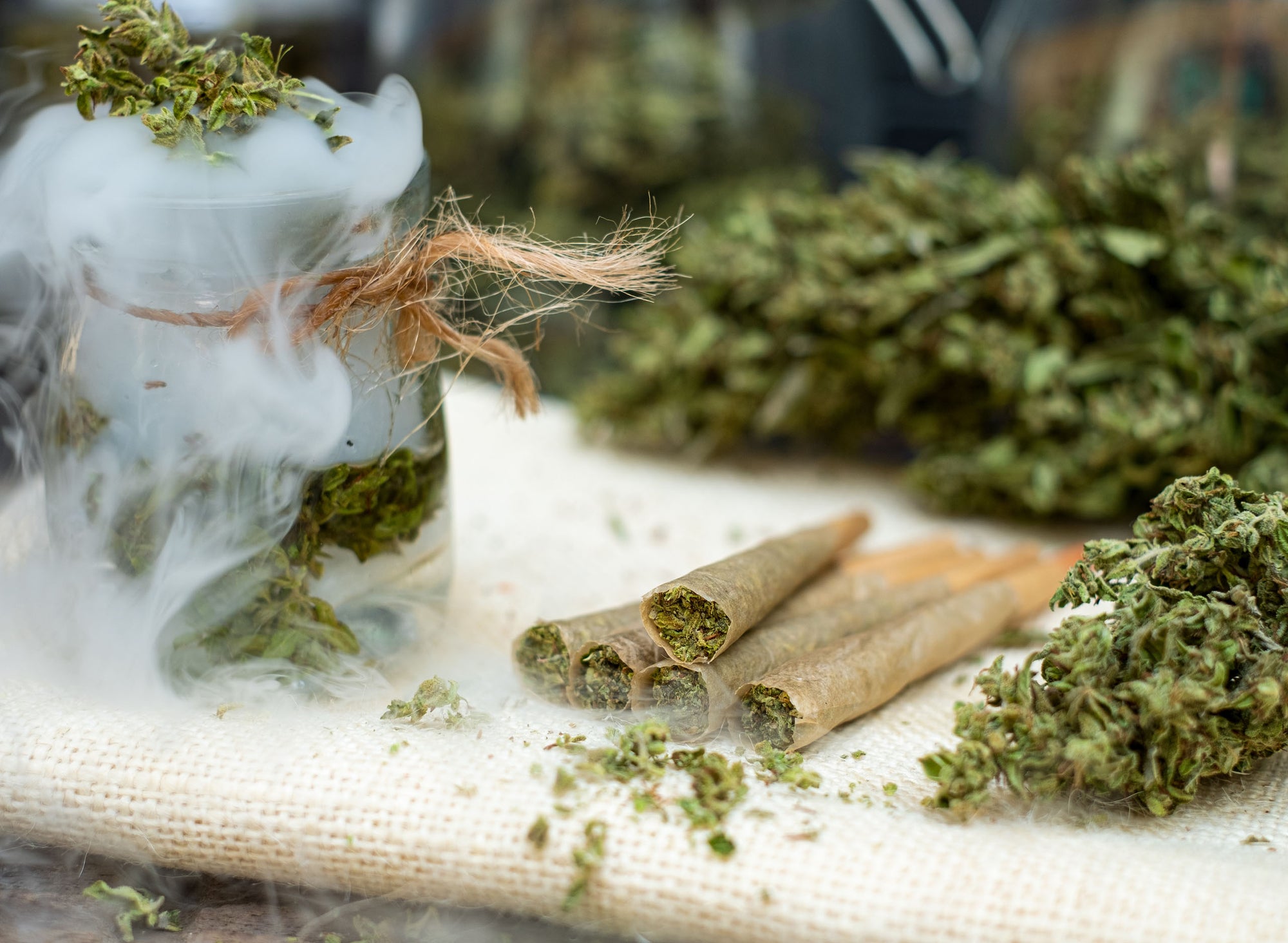
flower
The Ultimate Guide to RAW Cones: Types, Uses, and Where to Buy
Table of Contents
What Are RAW Cones and Why Are They Popular?
Types of RAW Cones: From Classic to Specialized
RAW Classic Cones
RAW Organic Cones
RAW Black Cones
Specialty RAW Cones
RAW Cone Sizes: Finding Your Perfect Fit
How to Use RAW Cones: Packing and Smoking Guide
Where to Buy RAW Cones: Retail and Wholesale Options
Essential RAW Cone Accessories for the Perfect Experience
The Future of RAW Cones: Innovation and Sustainability
nnThe Ultimate Guide to RAW Cones: Types, Uses, and Where to BuynnRAW cones have revolutionized the smoking experience for cannabis enthusiasts worldwide. These pre-rolled cones offer convenience, consistency, and quality that appeal to both newcomers and experienced users. This comprehensive guide covers everything you need to know about RAW cones, from the various types available to where you can purchase them in bulk.nnWhat Are RAW Cones and Why Are They Popular?nnRAW cones are pre-rolled paper cones made from unrefined, natural plant fibers. Unlike traditional rolling papers that require manual rolling, these cones come ready to fill with your favorite herbs. Their popularity stems from several key factors:nnnNatural materials free from harmful chemicalsnConsistent burning experiencenEase of use, especially for those who struggle with hand-rollingnVariety of sizes to accommodate different occasionsnTime-saving convenience for both personal use and businessesnnnAccording to comprehensive resources on RAW cones, these products are made from unbleached fibers and natural gum, making them a healthier alternative to many competing products.nnTypes of RAW Cones: From Classic to SpecializednnRAW Classic ConesnnRAW classic cones are the original offering that built the brand's reputation. Made from unbleached natural fibers, these light brown cones provide a clean, smooth smoking experience with minimal paper taste. They're available in various sizes from mini to king and come in different pack quantities to suit individual needs or business requirements.nnRAW Organic ConesnnFor the environmentally conscious consumer, RAW organic cones offer an eco-friendly option. These cones are made from organically grown hemp and processed without chlorine or other chemicals. The organic RAW cones provide an even purer smoking experience while maintaining the quality and reliability the brand is known for.nnRAW Black ConesnnRAW Black represents the ultra-thin premium line in the RAW family. Compared to classic cones, RAW Black cones are made with the thinnest rolling paper possible while maintaining structural integrity. This results in less paper and more flavor from your herbs, making them popular among connoisseurs who prioritize taste.nnSpecialty RAW ConesnnBeyond the standard offerings, RAW has developed specialty cones to meet specific needs:nnn
RAW Terp Cones: Designed to preserve and enhance terpene flavorsn
RAW Boosted Cones: Feature a cardboard insert to improve airflown
RAW Dogwalker Cones: Smaller cones perfect for quick sessionsn
RAW Level Cones: Include a special paper that helps achieve even burningnnnnHighlight: RAW cones are available in over a dozen different sizes and types, from tiny mini cones holding 0.3g to massive party-sized options that can hold nearly 2 grams of flower.nnnRAW Cone Sizes: Finding Your Perfect FitnnRAW offers an impressive range of sizes to accommodate different needs and preferences. Exploring the variety of RAW cone sizes can help you find your perfect match:nnn
RAW Mini Cones: Perfect for solo sessions or microdosingn
1 1/4 Size: The most popular size, ideal for 1-2 peoplen
RAW King Size: Larger option great for sharing among 2-3 peoplen
RAW XL Cones: Extra-large cones for longer sessionsn
RAW Ounce Cone: Massive cone that can hold up to a full ouncennnFor special occasions or group settings, our 140mm party-size cones that hold approximately 1.8 grams are perfect for sharing and creating memorable experiences.nnHow to Use RAW Cones: Packing and Smoking GuidennUsing RAW joint cones is straightforward, but proper technique ensures the best experience:nnnHold the cone upright with the open end facing upnGrind your herb to a medium consistencynGradually fill the cone, tapping gently to settle materialnUse a packing tool to ensure even distributionnTwist the open end to seal when fillednnnFor detailed instructions, this comprehensive guide on packing RAW cones provides step-by-step assistance with visual aids.nnWhere to Buy RAW Cones: Retail and Wholesale OptionsnnFinding RAW cones near you or online has never been easier. Options include:nnn
Local Smoke Shops: Most carry various RAW productsn
Dispensaries: In legal states, many cannabis retailers stock RAW conesn
Online Retailers: Websites like Smoke Cones offer extensive selections of RAW products
n
Wholesale Suppliers: For businesses looking to buy bulk RAW conesnnnWhen searching for "RAW cones near me," consider calling ahead to confirm availability of specific types like RAW organic cones or specialty options like RAW dogwalker cones.nnFor businesses, wholesale RAW cone options provide significant cost savings and ensure you always have stock on hand.nnEssential RAW Cone Accessories for the Perfect ExperiencennTo enhance your RAW cone experience, consider these complementary accessories:nnn
RAW Cone Tips: Additional filter tips for custom rollingn
Cone Fillers: Devices that help pack cones quickly and evenlyn
Storage Tubes: Protect pre-filled cones during transportn
Humidity Control Packs: Maintain freshness of stored conesnnnThese accessories not only improve the user experience but also help preserve your cones and herbs for optimal enjoyment. Many users find that proper accessories significantly enhance convenience and consistency.nnThe Future of RAW Cones: Innovation and SustainabilitynnRAW continues to innovate within the pre-rolled cone space, with increasing focus on sustainability and specialized products. Recent developments include biodegradable packaging, expanded organic offerings, and cones designed for specific consumption experiences.nnAs cannabis legalization expands globally, the market for quality pre-rolled cones like those from RAW is expected to grow substantially. Industry trends suggest continued innovation in materials, sizes, and specialized features to meet evolving consumer preferences.nnWhether you're a casual user looking for RAW cones nearby or a business seeking bulk RAW cones for production, understanding the full spectrum of options helps you make informed choices that enhance your smoking experience or business offerings.

flower
Exploring the Different Sizes of RAW Rolling Papers
Table of Contents
Understanding RAW Rolling Paper Sizes
RAW 1/4 and RAW 1/2: Compact Options
RAW 1 1/4: The Popular Standard
RAW 1 1/2: For Larger Sessions
King Size and Specialty Formats
Choosing the Right Size for Your Needs
Future Innovations in Rolling Paper Formats
nnExploring the Different Sizes of RAW Rolling PapersnnRAW rolling papers have become synonymous with quality and authenticity in the smoking accessories market. One of the most important considerations when selecting RAW papers is choosing the right size for your specific needs. From the compact RAW 1/4 to the generous RAW 1 1/2, each size offers distinct advantages for different smoking preferences and occasions.nnUnderstanding RAW Rolling Paper SizesnnRAW rolling papers come in several standardized sizes, each designated by specific measurements or fractions that indicate their relative dimensions. These size designations have become industry standards, making it easier for consumers to identify their preferred options across different brands and retailers.nnThe measurements typically refer to the width of the paper, while the length remains more standardized across the range. Understanding these size variations helps ensure you select the appropriate paper for your intended use, whether for personal enjoyment or sharing with others.nnRAW 1/4 and RAW 1/2: Compact OptionsnnThe RAW 1/4 size is among the smallest in the RAW lineup, offering a discrete option for quick, personal sessions. These compact papers are ideal for solo use when a minimal amount of material is desired. The small format makes them particularly convenient for on-the-go situations.nnMoving up slightly, the RAW 1/2 size provides a middle ground between the smallest papers and the standard options. This size balances convenience with a slightly more substantial capacity, making it popular for individual use when the smallest size might be too limiting.nnBoth these compact sizes are excellent for:nnnDiscrete, personal sessionsnConserving your smoking materialnSituations where portability is paramountnQuick sessions with minimal preparationnnnRAW 1 1/4: The Popular StandardnnThe 1 1/4 RAW size is arguably the most popular and widely used option in the lineup. This standard size strikes an ideal balance between capacity and convenience, making it versatile enough for both personal use and small group sessions. The 1 1/4 designation indicates that the paper is 1.25 times the width of a standard cigarette paper.nnRAW 1 1/4 papers typically measure approximately 78mm in length and 44mm in width, providing ample space for a comfortable amount of material without becoming unwieldy. This size has become the go-to standard for many enthusiasts due to its versatility.nnAs detailed in this comprehensive guide to RAW papers and accessories, the 1 1/4 size represents the sweet spot in the RAW lineup for everyday use. It's large enough to satisfy most users but still easy to roll and handle.nnnThe popularity of the 1 1/4 RAW papers has made them the standard by which other rolling papers are often measured in the industry. Their balanced dimensions provide an optimal smoking experience for most users.nnnRAW 1 1/2: For Larger SessionsnnWhen more capacity is needed, the RAW 1 1/2 size offers a step up from the standard option. These papers are designed for longer sessions or sharing among multiple people. The 1 1/2 designation indicates that these papers are 1.5 times the width of a standard cigarette paper.nnTypically measuring around 78mm in length and 76mm in width, RAW 1 1 2 papers provide significantly more capacity than their smaller counterparts. This makes them ideal for social gatherings or when a longer-lasting session is desired.nnFor those who prefer even larger options or are looking to accommodate group sessions, our larger format pre-rolled cones offer convenient alternatives that can hold up to 1.8 grams of material, perfect for parties and special occasions.nnKing Size and Specialty FormatsnnBeyond the standard fractional sizes, RAW also offers King Size papers, which are longer than the typical options, providing even more capacity for material. These papers are particularly popular for sharing among larger groups or for those who prefer extended sessions.nnIn addition to traditional rolling papers, RAW has expanded its product line to include specialty formats such as:nnnPre-rolled cones in various sizesnOrganic hemp papersnBlack edition papers (ultra-thin)nArtisan papers with unique characteristicsnnnFor those interested in exploring the full range of RAW products, including these specialty items, this guide to finding RAW products online provides valuable insights on sourcing authentic items from reputable retailers.nnChoosing the Right Size for Your NeedsnnSelecting the appropriate RAW paper size depends on several factors, including:nnn
Group size: Smaller papers like RAW 1/4 or RAW 1/2 for individual use, larger options like RAW 1 1/2 for sharingn
Material conservation: Smaller papers help conserve material for more economical usen
Experience level: Beginners might find the standard 1 1/4 RAW size easier to work withn
Portability needs: Smaller sizes are more discreet and travel-friendlyn
Session duration: Larger papers allow for longer sessions without needing to roll multiple timesnnnMany enthusiasts keep multiple sizes on hand to accommodate different situations and preferences. For bulk purchases of various sizes, this resource on RAW bulk packs provides information on cost-effective options for stocking up.nnIt's also worth noting that authenticity matters when purchasing RAW products. As discussed in this article on RAW authenticity, counterfeit papers are unfortunately common in the market, potentially compromising quality and the overall experience.nnFuture Innovations in Rolling Paper FormatsnnThe rolling paper industry continues to evolve, with RAW at the forefront of innovation. Beyond the traditional size variations, we're seeing new developments in materials, sustainability practices, and specialized formats designed for specific user preferences.nnRAW's commitment to natural, unrefined products has established them as industry leaders, as detailed in this exploration of RAW's company history and values. As consumer preferences evolve, we can expect to see continued innovation in paper sizes and formats that cater to emerging trends and usage patterns.nnFor those who prefer the convenience of pre-rolled options in various sizes, our selection of RAW cones offers ready-to-fill alternatives that maintain the quality and experience of traditional RAW papers while eliminating the rolling process entirely.nnWhether you prefer the compact RAW 1/4, the standard 1 1/4 RAW, or the generous RAW 1 1/2, understanding the differences between these size options ensures you'll select the perfect paper for your specific needs and preferences.
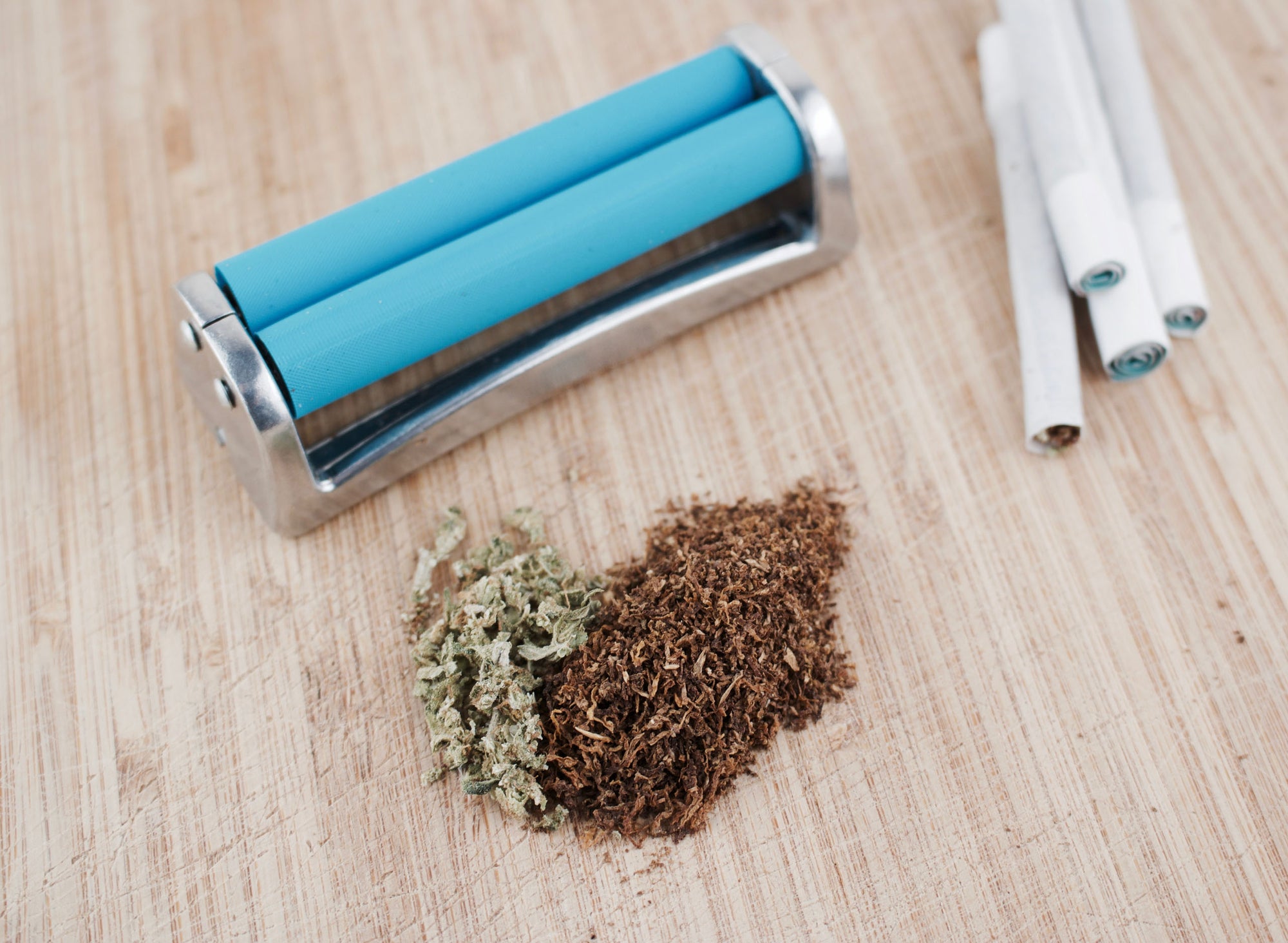
flower
Mastering the Art of Using a RAW Rolling Machine
Table of Contents
Understanding RAW Rolling Machines
Essential Supplies for Your Rolling Session
Step-by-Step Guide to Using a RAW Rolling Machine
Troubleshooting Common Issues
Advanced Techniques for the Perfect Roll
Enhancing Your Rolling Experience: Beyond the Basics
Mastering the Art of Using a RAW Rolling MachineRAW rolling machines have revolutionized the rolling process, making it accessible for everyone regardless of skill level. These ingenious devices create perfectly cylindrical rolls every time, eliminating the frustration that often comes with hand-rolling. Whether you're new to rolling or looking to perfect your technique with a RAWthentic rolling machine, this comprehensive guide will walk you through everything you need to know.Understanding RAW Rolling MachinesRAW rolling machines come in various sizes to accommodate different preferences. The most common sizes are 79mm (1 ¼ inch), 110mm (king size), and 70mm (single wide). Each machine operates on the same basic principle: two rolling aprons connected to rollers that, when manipulated correctly, create a perfect cylinder for your materials.According to our comprehensive guide on RAW rolling machine sizes, the 110mm king size roller is particularly popular due to its versatility and capacity. The material quality of RAWthentic rolling machines also sets them apart, with durable plastic construction that maintains its shape and functionality over time.Essential Supplies for Your Rolling SessionBefore starting with your RAW rolling machine, gather these essential items:
Your RAW rolling machine
RAW rolling papers (matched to your machine size)
Ground herb material
Filter tips (optional but recommended)
A clean, flat surface for working
A grinder for consistent material preparation
Having everything prepared before you start will make the rolling process much smoother. For those looking to expand their setup, our selection of pre-roll packaging options can help keep your finished rolls protected and organized for later use.Choosing the Right PapersRAW papers complement their rolling machines perfectly. The unbleached, natural fibers provide a clean experience while maintaining the structural integrity needed for machine rolling. For beginners, standard thickness papers are recommended, while more experienced users might prefer the thinner RAW Classics or RAW Black series.Step-by-Step Guide to Using a RAW Rolling MachineFollow these steps to achieve a perfect roll with your RAW rolling machine:1. Prepare Your MachineOpen your rolling machine fully, revealing the two rolling aprons inside. Make sure they're flat and properly seated in the mechanism. If using a filter tip, place it at one end of the roller now.2. Add Your MaterialDistribute your ground material evenly along the center of the apron. Avoid overloading, as this is the most common mistake beginners make. A moderate amount spread evenly will roll much better than a densely packed machine.3. Shape the MaterialGently close the roller (not completely) and use your thumbs to shape the material into a cylinder by rolling the aprons forward and backward a few times. This pre-forms your material before inserting the paper.4. Insert the Rolling PaperWith the machine still partially closed and your material shaped, insert your RAW rolling paper with the gummed edge facing up and toward you, extending slightly above the roller.5. Complete the RollRoll the machine forward (away from you) with your thumbs while keeping even pressure across the entire width. This will catch the paper and wrap it around your material. Continue rolling until only the gummed edge is visible.6. Seal the PaperLick the gummed edge of the paper and complete one final forward roll to seal it. The machine should now contain your completed roll.7. Remove Your Finished RollOpen the machine carefully and remove your perfectly rolled creation. If necessary, gently twist the open end to secure any loose material.Highlight: The key to mastering a RAW rolling machine is even distribution of material and consistent pressure when rolling forward. Practice these two elements for perfect results every time.Troubleshooting Common IssuesEven with a rolling machine, you might encounter some challenges. Here are solutions to common problems:Paper CrumplingIf your paper crumples during rolling, you're likely applying uneven pressure. Focus on using both thumbs evenly across the entire width of the roller. Also check that your paper is properly aligned before rolling.Loose RollsIf your finished product feels too loose, you likely didn't shape the material enough before inserting the paper. Spend more time on step 3, ensuring your material forms a solid cylinder before adding the paper.Too Tight to DrawConversely, if your roll is too tight, you may have used too much material or applied excessive pressure. Use a lighter touch and slightly less material next time.For more detailed troubleshooting, our step-by-step RAW roller guide covers additional techniques and solutions.Advanced Techniques for the Perfect RollOnce you've mastered the basics, try these advanced techniques:The Cone RollTo create a cone shape, distribute your material with more concentration toward one end of the roller. This creates a tapered effect that some users prefer.Double Paper TechniqueFor larger sessions, try the double paper technique by carefully joining two papers together at their gummed edges. This works best with the 110mm roller for extra capacity.Filter Tip MasteryExperiment with different filter tip styles and sizes. The RAW rolling machine accommodates various filter options, from basic tips to pre-rolled filter tips with different draw resistances.As noted in our guide to RAW automatic joint rollers, mastering these advanced techniques can significantly enhance your rolling experience and final product quality.Enhancing Your Rolling Experience: Beyond the BasicsThe RAW rolling machine is just one component in a broader rolling ecosystem. To truly master the art of rolling with RAW products, consider these additional elements:Investing in quality storage solutions preserves freshness and protects your finished rolls. Many enthusiasts find that proper storage enhances the overall experience significantly. Additionally, exploring different paper varieties within the RAW family can help you find your perfect match based on thickness preference and burning characteristics.Remember that practice makes perfect. Even with a rolling machine, developing muscle memory through repetition will lead to faster, more consistent results over time. Each session is an opportunity to refine your technique and discover personal preferences that work best for your specific needs.With these comprehensive instructions and tips, you're well-equipped to master your RAW rolling machine and enjoy perfectly rolled creations every time. The combination of quality tools, proper technique, and a bit of practice will elevate your rolling experience to new heights.
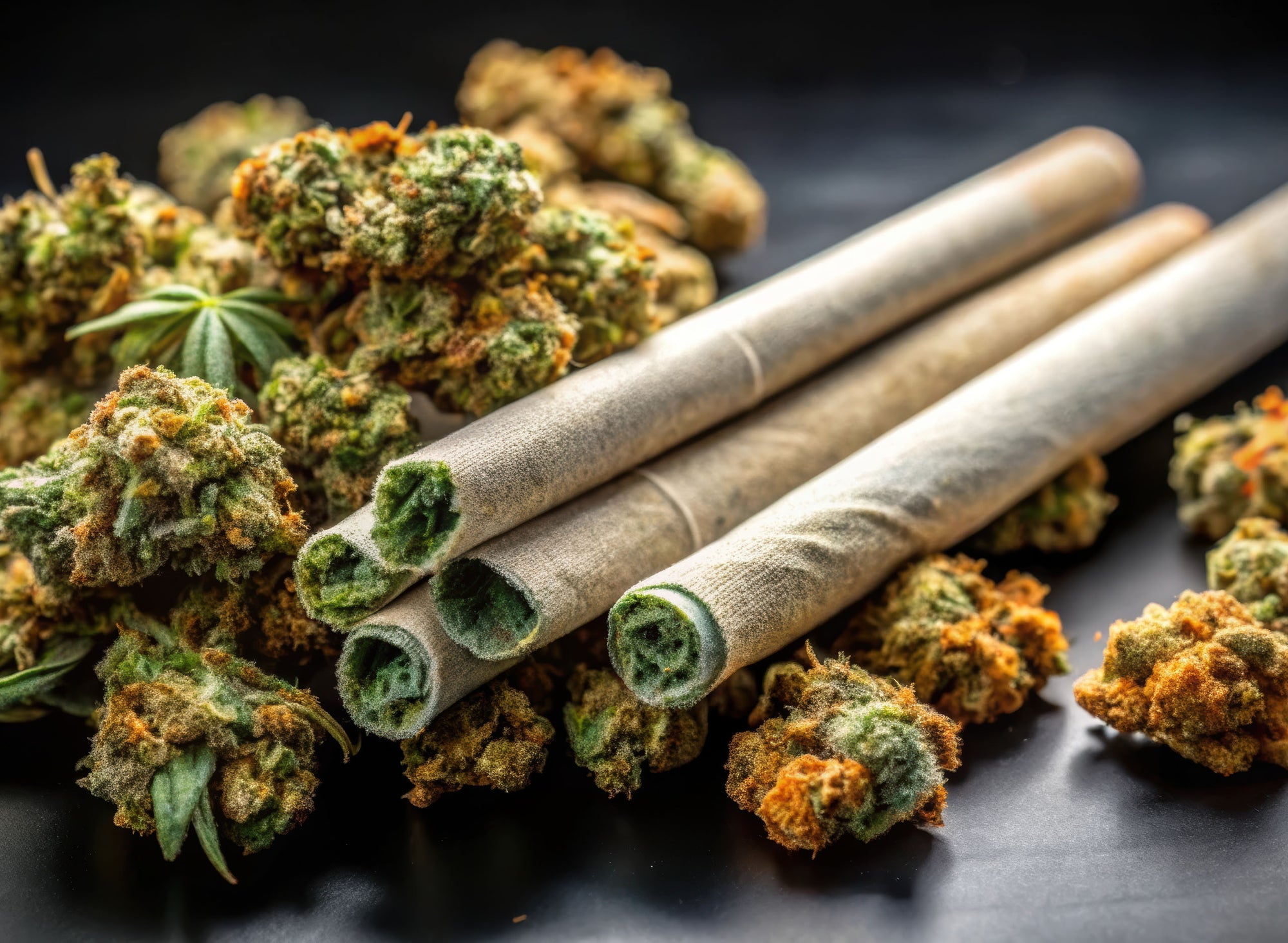
flower
A Comprehensive Guide to RAW Rolling Machine Sizes and the 110mm Edition
Table of Contents
Understanding RAW Rolling Machine Sizes
Spotlight on the 110mm RAW Rolling Machine
Comparing RAW Rolling Machine Variants
Tips for Using the 110mm RAW Rolling Machine
Maintaining Your RAW Rolling Machine
Expanding Your Rolling Equipment Collection
A Comprehensive Guide to RAW Rolling Machine Sizes and the 110mm EditionRAW rolling machines have revolutionized the rolling experience for enthusiasts seeking consistency and convenience. Understanding the various RAW rolling machine sizes available on the market can help you select the perfect tool for your specific needs. This guide explores the complete lineup with special attention to the versatile 110mm edition.Understanding RAW Rolling Machine SizesRAW offers rolling machines in several key sizes, each designed for specific preferences and applications. The standard sizes include:
70mm - Compact size for smaller, personal rolls
79mm - Standard size for regular rolling papers
110mm - Extended length for larger rolls or multiple rolls at once
King Size - Specifically designed for king size papers
According to our guide to choosing the right RAW rolling machine, size selection should be based primarily on your preferred paper dimensions and desired final product.Spotlight on the 110mm RAW Rolling MachineThe RAW rolling machine 110mm edition stands out in the lineup for several compelling reasons:Design FeaturesThe 110mm variant features the same high-quality hemp plastic construction as other RAW rollers but with an extended rolling surface. This larger format accommodates longer papers and allows for:
Rolling multiple standard-sized rolls simultaneously
Creating longer, party-sized rolls
Accommodating a variety of paper sizes
The apron design of the 110mm follows RAW's signature dual-roller system, providing the perfect tension for consistent rolling results.Versatility and ApplicationsAs detailed in the ultimate guide to RAW rolling machines, the 110mm size offers exceptional versatility. It works well with:
Standard papers (multiple at once)
King size papers
Extra-long specialty papers
Blunt wraps (with some limitations)
The 110mm RAW rolling machine is particularly valuable for those who regularly roll for groups or prefer larger format rolls for personal use.Comparing RAW Rolling Machine VariantsBeyond size differences, RAW offers several variants in their rolling machine lineup:
Feature
Standard Roller
Adjustable Roller
Automatic Roller
Material
Hemp Plastic
Hemp Plastic
Hemp Plastic/Metal Components
Sizes Available
70mm, 79mm, 110mm
79mm, 110mm
70mm, 79mm, 110mm
Roll Thickness Control
Fixed
Adjustable
Fixed
Ease of Use
Moderate
Moderate
High
The 110mm size is available across most variants, offering flexibility in your rolling style preferences. For those seeking automation, RAW's automatic joint rollers provide an even more streamlined experience.Tips for Using the 110mm RAW Rolling MachineMastering the 110mm RAW rolling machine requires some specific techniques:Loading ProperlyDue to its larger size, the 110mm roller requires careful attention to material distribution:
Spread material evenly across the entire length
Use slightly more material than smaller rollers
Ensure even pressure when closing the roller
For detailed instructions, refer to mastering the art of using a RAW rolling machine.Paper PlacementWith the 110mm model, paper placement becomes even more critical:
Center the paper with equal overhang on both sides
For multiple papers, arrange them with slight overlap
Ensure the gummed edge faces the correct direction
When working with specialty papers or blunt wraps, you may need to adjust your technique slightly as outlined in this guide to RAW rolling machines for cigarettes and blunts.Maintaining Your RAW Rolling MachineProper maintenance extends the life of your 110mm roller:
Clean regularly with a soft brush to remove residue
Store in a protective case when not in use
Avoid excessive pressure that might warp the rollers
Keep away from extreme temperatures
The hemp plastic construction of RAW rollers is durable but benefits from proper care. As discussed in the ultimate guide to RAW hemp plastic rolling machines, these rollers are designed to be environmentally friendly while maintaining functionality.Expanding Your Rolling Equipment CollectionWhile RAW rolling machines offer excellent functionality, many enthusiasts expand their collection with complementary products. We offer premium Futurola cones that pair perfectly with RAW products for those times when you prefer a pre-rolled option instead of using your machine.For those who alternate between machine rolling and hand rolling, this guide to automatic and manual techniques provides valuable insights on developing both skill sets.Whether you're just starting with rolling machines or looking to upgrade to the 110mm size, understanding the options available helps you make an informed decision that enhances your rolling experience. The 110mm RAW rolling machine represents an excellent balance of versatility and functionality for enthusiasts who appreciate the larger format.



